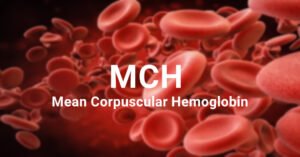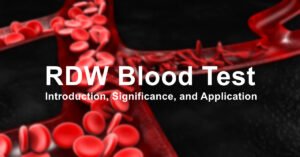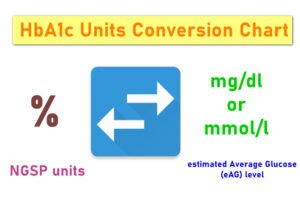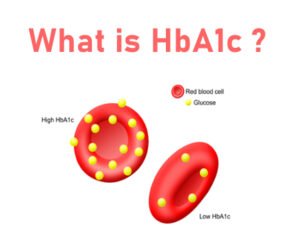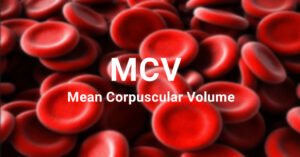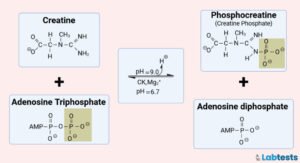MCHC is a part of your complete blood count (CBC). MCHC in blood tests stands for mean corpuscular hemoglobin concentration. It measures average hemoglobin (Hb) concentration in a given red blood cell (RBC) volume.
You can remember with your background memory that each of the red blood cells (RBCs) has hemoglobin (Hb), which is the protein molecule that carries oxygen to the cells.
The color of red blood cells is hemoglobin (Hb). So, the red blood cells (RBCs) having a higher concentration of hemoglobin and high MCHC looks darker, called hyperchromic. And the red blood cells (RBCs) having a low concentration of hemoglobin and low MCHC appear lighter, called hypochromic.
Mean corpuscular hemoglobin concentration (MCHC) is different from mean corpuscular hemoglobin (MCH). MCH is a measure of the average hemoglobin (Hb).
MCHC Formula and Calculation
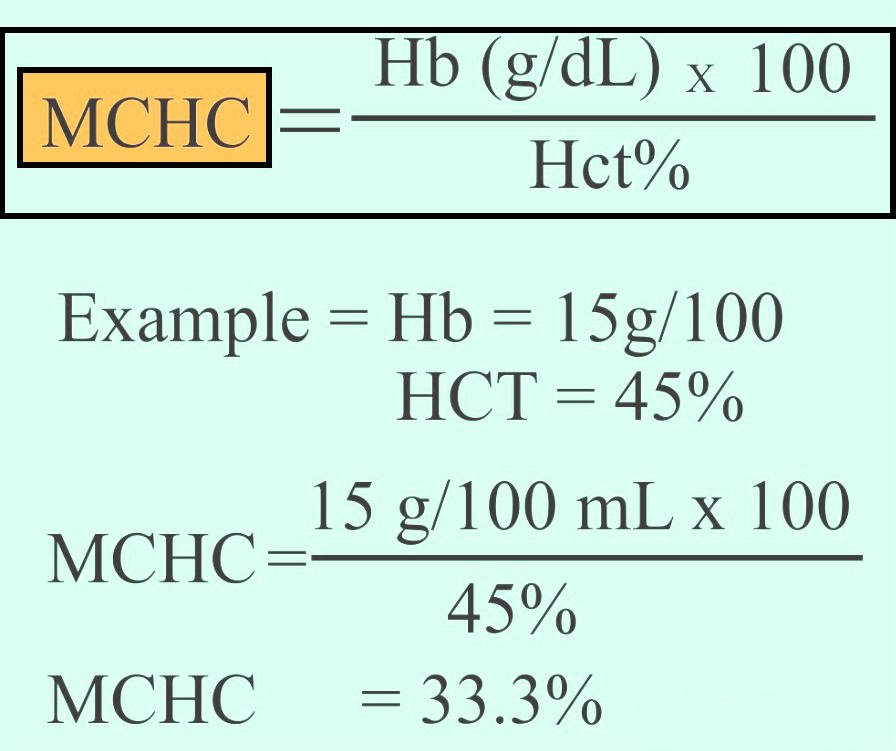
Red Cell Indices
Red blood cell indices are part of complete blood count (CBC). These are commonly used to diagnose different medical disorders like anemias. As you already know, our cells need oxygen to grow, stay healthy, and live. This oxygen is supplied through hemoglobin (Hb) present on these red blood cells (RBCs).
The red blood cell (RBC) indices are mean corpuscular volume (MCV), mean corpuscular hemoglobin (MCH), mean corpuscular hemoglobin concentration (MCHC), and red cell distribution width (RDW). All these indices have their clinical significance.
Reference Range
It is expressed as a percentage or g/dL. Unlike MCH, MCHC is not affected by the value of mean corpuscular volume (MCV). The reference range for MCHC is 32-36 g/dL or 32-36 %. The results may be inaccurate after transfusion.
Differences between MCH and MCHC
Following are the differences between MCH and MCHC
| Mean Corpuscular Hemoglobin (MCH) | Mean Corpuscular Hemoglobin Concentration (MCHC) |
|---|---|
| Mean Corpuscular Hemoglobin (MCH) measures the amount of hemoglobin present in one Red Blood Cell (RBC). | Mean Corpuscular Hemoglobin Concentration (MCHC) measures the average concentration of hemoglobin in Red Blood Cells (RBCs) volume. |
| The results are reported by minimal weight is called a picogram (pg). | The results are reported in percentages (%) or g/dL. |
| The formula for measuring Mean Corpuscular Hemoglobin (MCH) isMCH = Hemoglobin / RBCs x 10 | The formula for measuring Mean Corpuscular Hemoglobin Concentration (MCHC) is MCHC(g/dL) = Hb(g/dL) x 100/hematocrit (Hct) % |
| Reference Range = 27 and 35 pg | Normal Range = 32-36 g/dL or 32-36 % |
Causes for low MCHC
Low level of MCHC means below the reference range i.e less than 32g/dL or 32% and causes hypochromia, that is a sign of anemia.
- Iron deficiency – dietary iron deficiency, decrease iron absorption (e.g., Celiac disease or other malabsorptive disorders), or toxins that interfere with iron absorption (e.g., lead)
- Iron deficiency anemia – the most common cause of low MCHC.
- Thalassemia
- Anemia of chronic disease
- Sideroblastic anemia
Treatment of low MCHC
A balanced diet with enough nutrients, like iron, can raise the MCHC level in the blood. But it should be managed with your doctor’s consultation. A balanced diet will cure the low MCHC level due to dietary deficiency.
Foods rich in iron are following
- Spinach
- Beans
- Red meat
- Poultry
- Peas
- Seafood
If there is a problem in absorption (i.e. celiac disease) or other hematological disorders, then other therapeutic measures with proper evaluation are needed.
Drinking tea or coffee with meals should be avoided. Because it decreases the absorption of iron in the gut and leads to low MCHC levels. Sometimes, your doctor may prescribe you to transfuse blood when the MCHC level is severely deficient.
Supplements that can be added after your doctor’s consultation are iron and vitamin C. Vitamin C increases iron absorption. Fibers can also be added to your diet, which is helpful in the absorption of iron.
Foods rich in fibers are following
- Bananas
- Chicken breast
- Spinach
- Sweet potato
Causes for high MCHC
Mean corpuscular hemoglobin concentration (MCHC) is a stable variable. MCHC calculation is derived from the two parameters, hemoglobin, and hematocrit. MCHC can be spuriously increased in autoagglutination and hyperlipidemia due to spuriously low hematocrit and spuriously high Hb, respectively.
Truly increased MCHC usually occurs in hereditary spherocytosis or some cases of homozygous sickle cell or hemoglobin C disease. Increased level of MCHC provides a clue to increased spherocytes. The other causes of high MCHC are following
- Hemolytic anemia
- Vitamin B12 deficiency
- Folate deficiency
- Hereditary spherocytosis
Symptoms
Basically, the mean corpuscular hemoglobin concentration (MCHC) measures the average oxygen-carrying capacity of the red blood cells circulating in the body. So, oxygen-carrying capacity is directly changed with the levels of MCHC. The common symptoms in patients with a low level of MCHC are the following.
- Fatigue
- Shortness of breath
- Pallor (pale skin)
- Weakness
- Increased heartbeat
- Dizziness
Specimen, collection, and panel
Specimen
Whole blood is mostly used as a sample. It is collected from the veins.
Collection
Before drawing the blood sample, a laboratory technician will take your consent. The sample is usually taken from the veins of the arm. Antiseptic is used to cleanse the area. A tourniquet is applied to visualize the vein better.
Then the lab technician will insert a needle, and the sample is obtained. EDTA tube (purple/lavender top) containing EDTA potassium salt additive as an anticoagulant will be used to collect the whole blood sample. The collected specimen will be used for further analysis.
Panel
Complete blood count (CBC)
Frequently Asked Questions
Q1. What is the MCHC in blood tests?
MCHC is a medical abbreviation for mean corpuscular hemoglobin concentration in blood tests. It can be normal, low, or high. Low MCHC means red blood cells don’t have enough hemoglobin. That affects the oxygen-carrying capacity of RBCs.
Q2. How to calculate MCHC?
MCHC is calculated by hemoglobin (Hb) and hematocrit (Hct) levels. It is expressed as a percentage or g/dL.
MCHC(g/dL) = Hb(g/dL) x 100/hematocrit (Hct) %
Q3. How to increase MCHC in blood?
A balanced diet with enough nutrients is used to raise the MCHC levels in the blood. All of the following things should be used after your doctor’s consultation.
1. Balanced diet and foods rich in iron
2. Iron supplements
3. Avoid tea or coffee to use combined with a meal
4. Vitamin C helps raise iron absorption
5. Fibers
6. Blood transfusions rarely
Q4. What happens if the MCHC gets low?
The low level of mean corpuscular hemoglobin concentration (MCHC) indicates that red blood cells cannot supply oxygen to the cells. Oxygen is the key element for the survival of cells. Low oxygen supply results in fatigue, shortness of breath, and other symptoms.
References:
- Sarma PR. Red Cell Indices. In: Walker HK, Hall WD, Hurst JW, editors. Clinical Methods: The History, Physical, and Laboratory Examinations. 3rd edition. Boston: Butterworths; 1990. Chapter 152. Available from: https://www.ncbi.nlm.nih.gov/books/NBK260/
- https://www.healthline.com/health/high-mchc
- https://labs.selfcode.com/blog/mean-corpuscular-hemoglobin-concentration-mchc/

